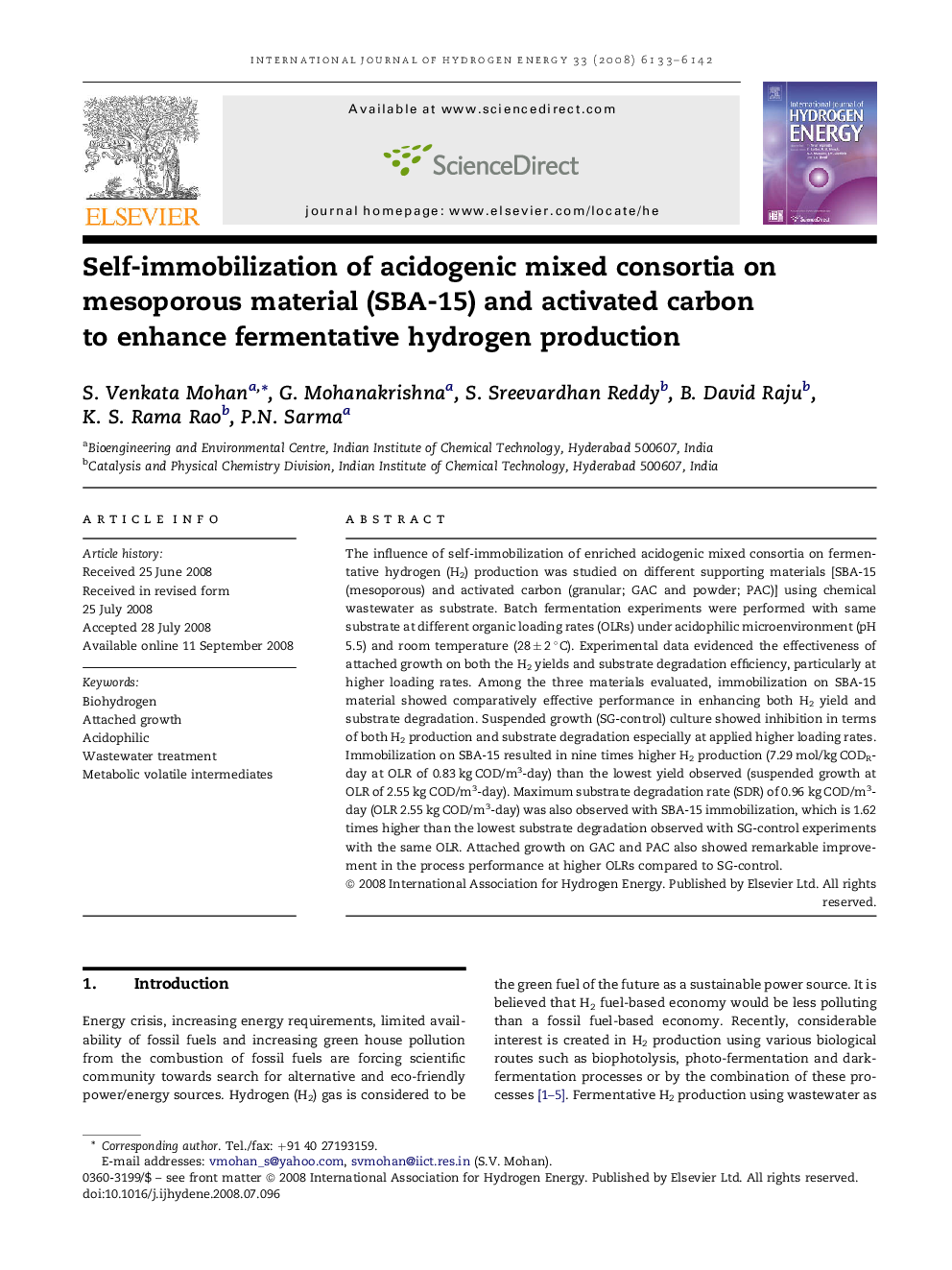| Article ID | Journal | Published Year | Pages | File Type |
|---|---|---|---|---|
| 1283613 | International Journal of Hydrogen Energy | 2008 | 10 Pages |
The influence of self-immobilization of enriched acidogenic mixed consortia on fermentative hydrogen (H2) production was studied on different supporting materials [SBA-15 (mesoporous) and activated carbon (granular; GAC and powder; PAC)] using chemical wastewater as substrate. Batch fermentation experiments were performed with same substrate at different organic loading rates (OLRs) under acidophilic microenvironment (pH 5.5) and room temperature (28 ± 2 °C). Experimental data evidenced the effectiveness of attached growth on both the H2 yields and substrate degradation efficiency, particularly at higher loading rates. Among the three materials evaluated, immobilization on SBA-15 material showed comparatively effective performance in enhancing both H2 yield and substrate degradation. Suspended growth (SG-control) culture showed inhibition in terms of both H2 production and substrate degradation especially at applied higher loading rates. Immobilization on SBA-15 resulted in nine times higher H2 production (7.29 mol/kg CODR-day at OLR of 0.83 kg COD/m3-day) than the lowest yield observed (suspended growth at OLR of 2.55 kg COD/m3-day). Maximum substrate degradation rate (SDR) of 0.96 kg COD/m3-day (OLR 2.55 kg COD/m3-day) was also observed with SBA-15 immobilization, which is 1.62 times higher than the lowest substrate degradation observed with SG-control experiments with the same OLR. Attached growth on GAC and PAC also showed remarkable improvement in the process performance at higher OLRs compared to SG-control.
